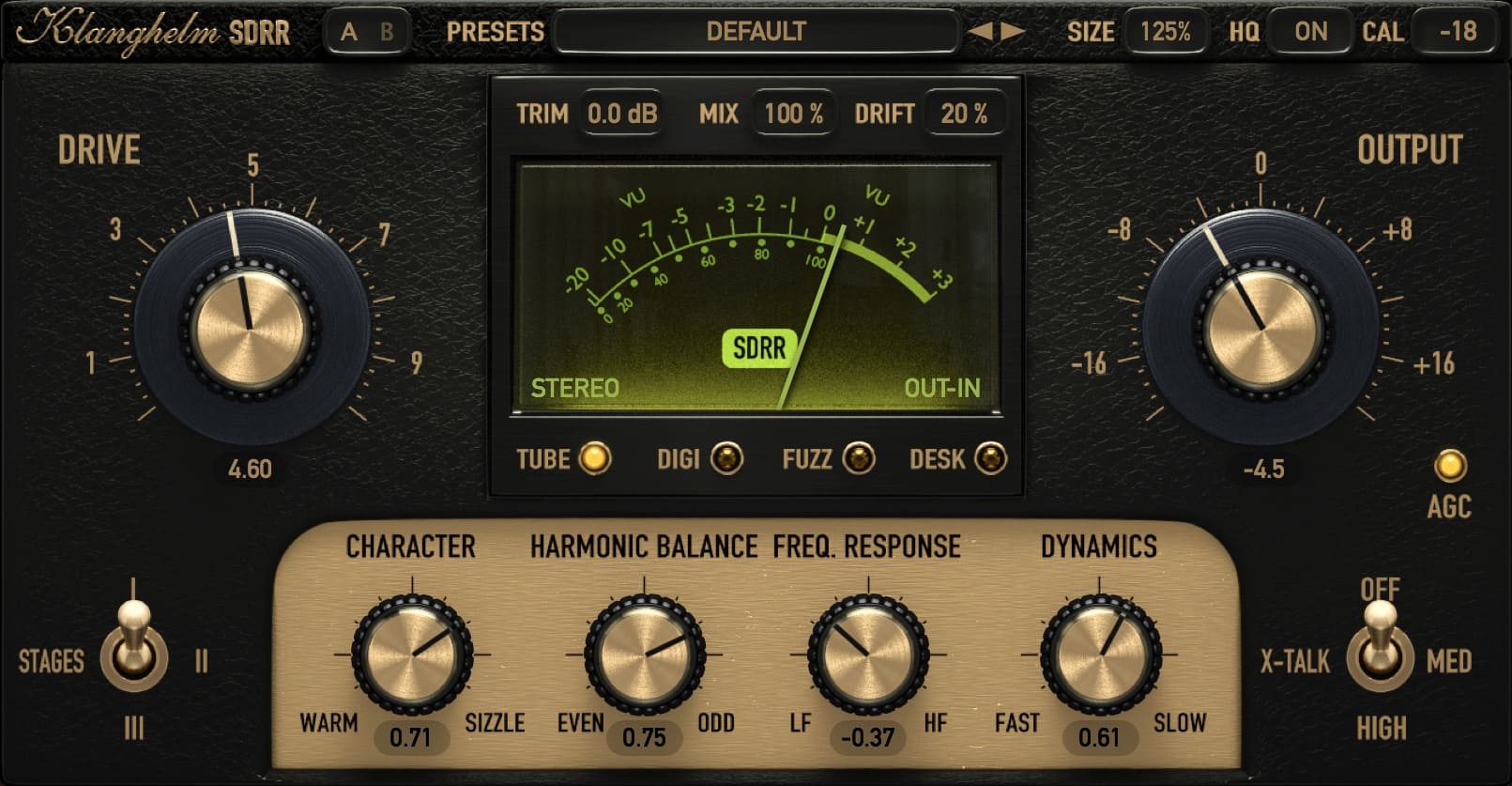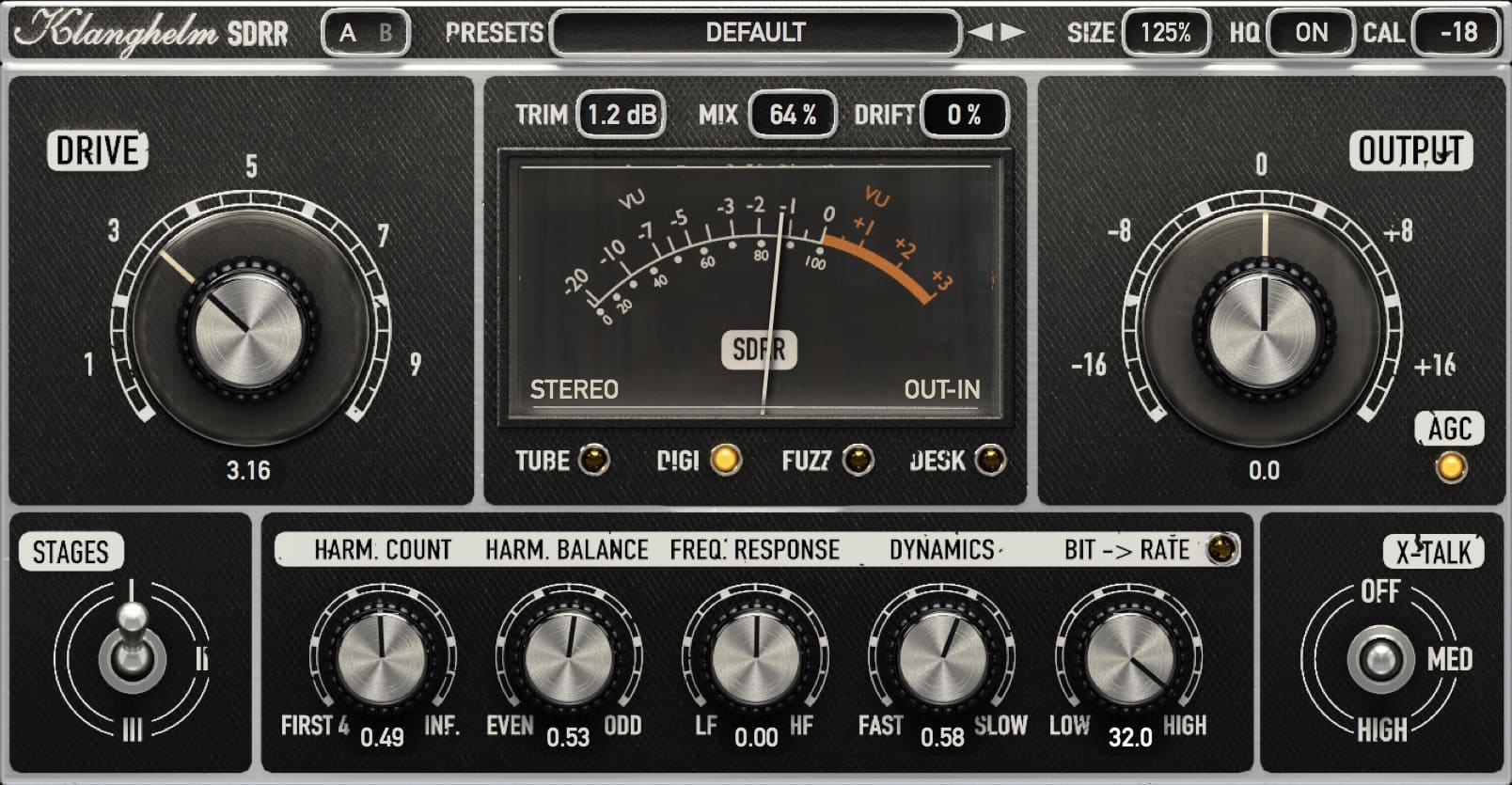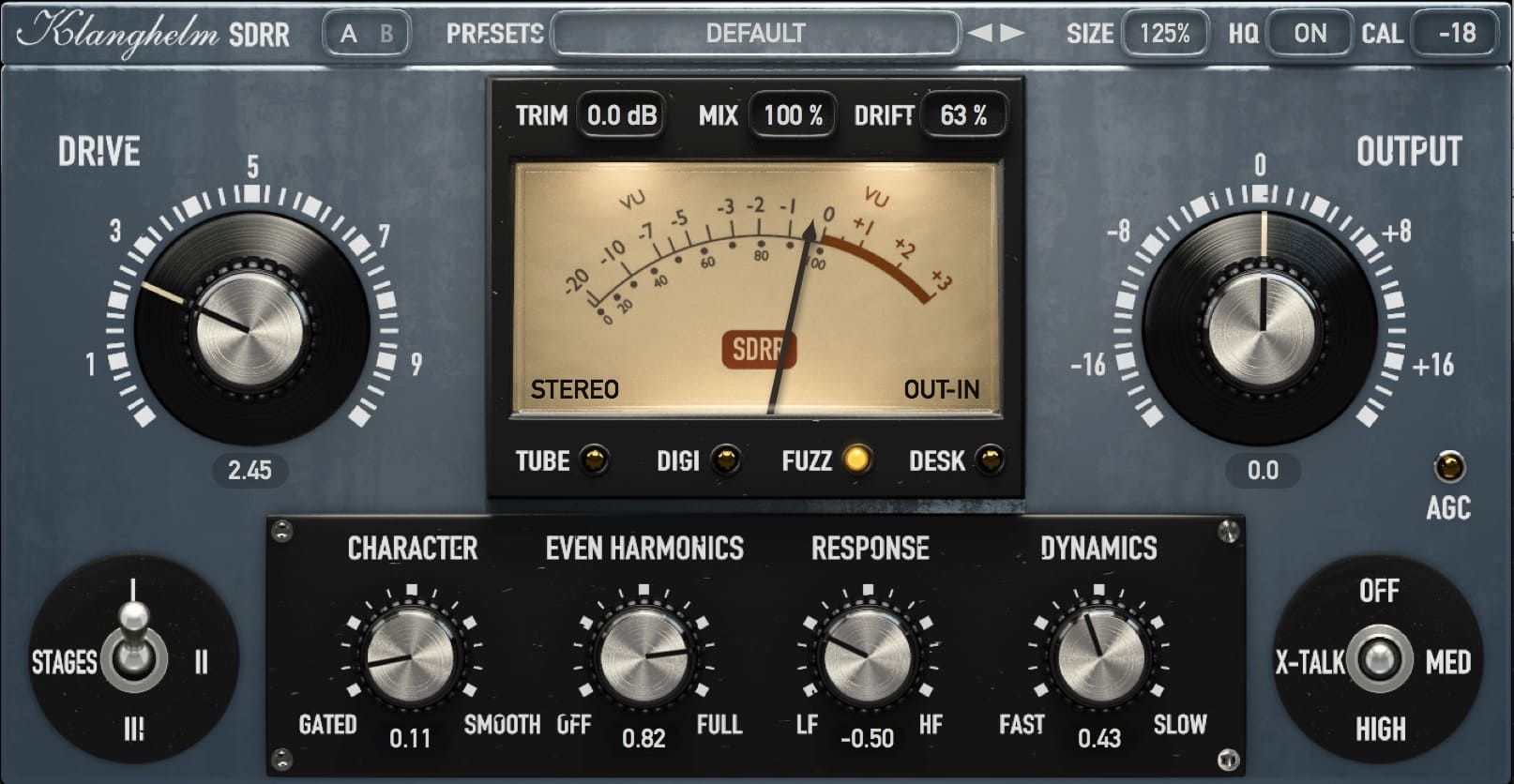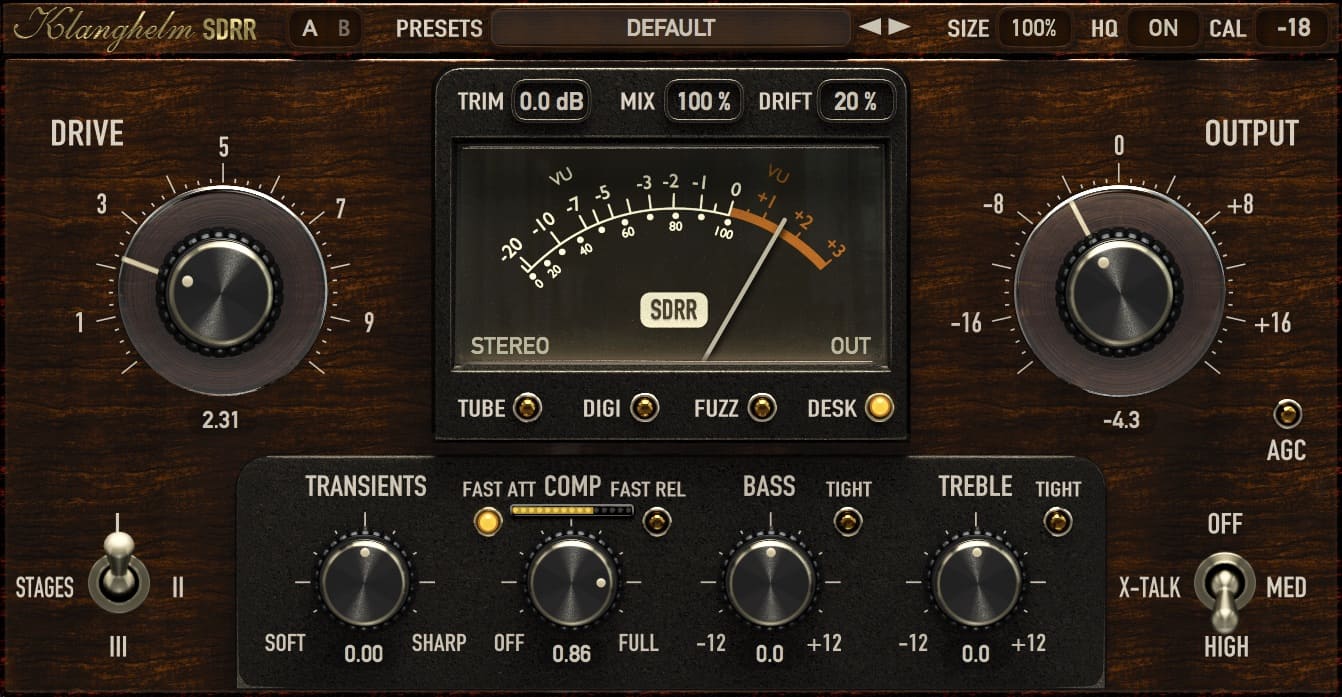SDRR
saturation chameleon
Introducing SDRR
SDRR was
built to satisfy almost all of your saturation
desires. It provides a comprehensive set of controls
to manipulate the character of the saturation to
make it fit exactly. SDRR offers four different main
modes: TUBE, DIGI, FUZZ, DESK and reacts dynamically
to the input signal. Each mode has its unique
crosstalk behavior, which can be switched off or
exaggerated. A unique RMS level difference metering
mode makes level matching an easy task. SDRR can be
different things: a saturation, a compressor, an EQ,
a bit-crusher, a subtle stereo widener, or simply
add some movement to your tracks with the DRIFT
control. Add warmth, depth and character to your
tracks with SDRR. Don't forget to check out the free
IVGI, which can be seen as the little brother of
SDRR. It is based on the DESK mode in SDRR. Since
IVGI is comparable to SDRR quality-wise,
CPU-consumption wise and regarding aliasing (or
better the absence of aliasing artifacts), it's a
good way to also get an impression of how SDRR would
perform on your system. SDRR is available in the
following formats (all included in one single
license):

Windows (64bit): VST, VST3, AAX Native for ProTools® 11 or
higher
macOS: AU, VST,
VST3, AAX Native for ProTools® 11 or higher
The four modes in SDRR:
The TUBE mode consists of two different models of a two
stage tube preamplifier. These two models can be
blended into each other with the CHARACTER control.
WARM focusses more on the transient smoothing and
compressing character associated with tubes, while
SIZZLE captures the harmonics generated, when
driving the preamp without affecting the transients
much.
The DIGI mode: designed to precisely add even and/or odd
harmonics to program material. Gives a very
controlled sound. Again two models were created,
which can be blended. The first one only generated
the first 4 harmonics. DIGI is great for adding
harmonics and excitement to your tracks without
coloring the signal too much and might act as a
proof, that digital saturation can sound pleasant.
Use the BIT->RATE control for bit crushing/sample
rate reduction effects. Combined with the DRIFT
parameter it can get pretty wild!
The FUZZ mode: consists of two different models of classic
germanium fuzz stomp boxes. Both are heavily
modified for lower distortion levels to be suited
even for mastering duties. The FUZZ mode takes
advantage of the unique properties of germanium
transistors and delivers a very warm, cosy
sound.
THE DESK mode: Klanghelm's version of a flexible mixing desk
channel strip plugin with just a few controls. It
features a sophisticated 2 band EQ with special
designed curves to fit most material. Furthermore it
offers control over the transient response of the
saturation and the compression. The aim of the DESK
mode is to be the only plugin needed for an at least
OK recorded track to shine - all with very few
controls.
The first examples demonstrate how the
different SDRR models perform on
an acoustic drum bus phrase: first dry, then processed
with each of the models. No other processing
involved.
In the last drums example
SDRR is used on each drum element and on the
bus.
Next are some clips to
demonstrate SDRR on electric bass.
More examples to follow ...
Downloads
Download the manual for more
information
French version of the manual
(kindly translated by TATOO MANDARINE studios)
Download the free IVGI
IVGI's base sound is comparable to
the DESK mode in SDRR and gives you an idea,
how SDRR performs quality-wise and CPU-wise.
If IVGI runs smoothly for you, SDRR will do
the same. Also, if you like what IVGI does,
you'll love SDRR.



